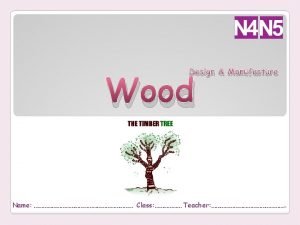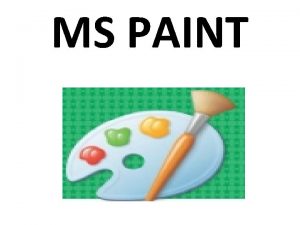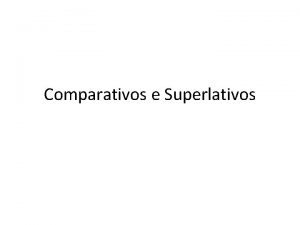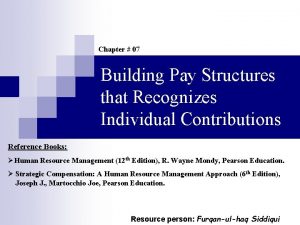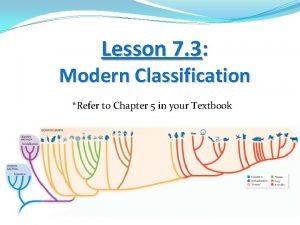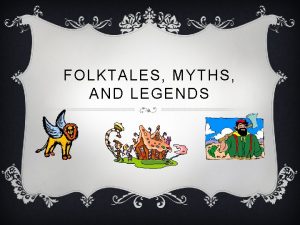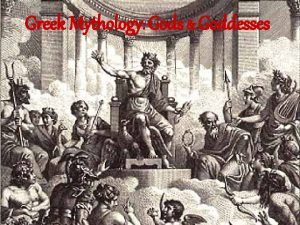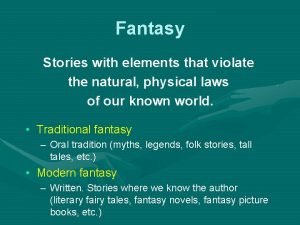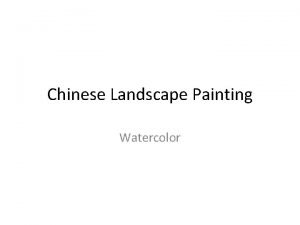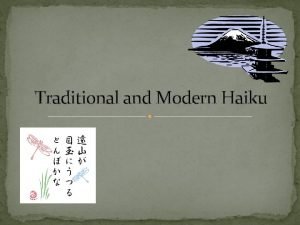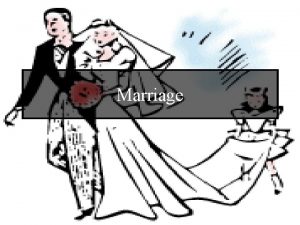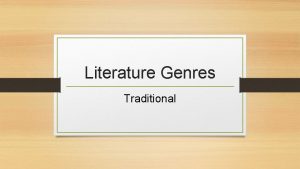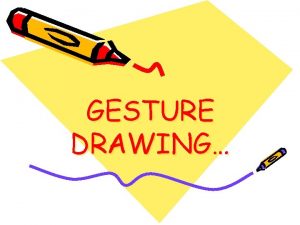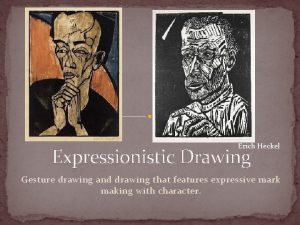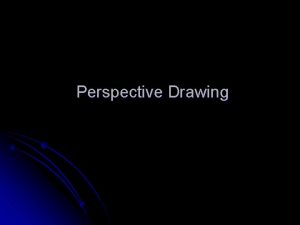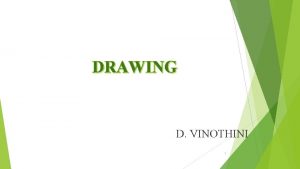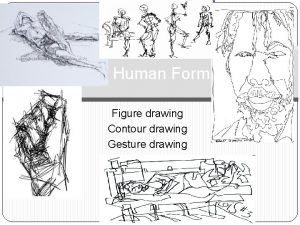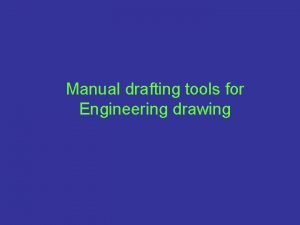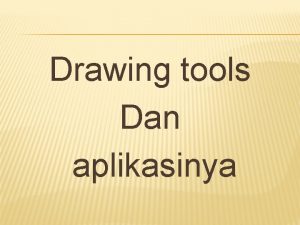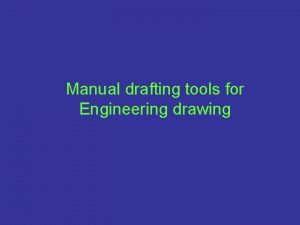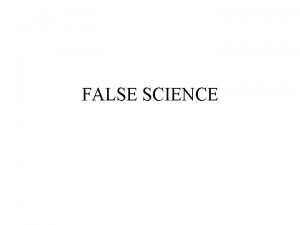Traditional Drawing Tools DRAWING TOOLS DRAWING TOOLS 1











































- Slides: 43

Traditional Drawing Tools

DRAWING TOOLS

DRAWING TOOLS 1. T-Square 2. Triangles

DRAWING TOOLS 2 H or HB for thick line 4 H for thin line 3. Adhesive Tape 4. Pencils

DRAWING TOOLS 5. Sandpaper 6. Compass

DRAWING TOOLS 7. Pencil Eraser 8. Erasing Shield

DRAWING TOOLS 9. Circle Template 10. Tissue paper

DRAWING TOOLS 11. Sharpener 12. Clean paper

ABCDEFGHIJKLMNOPQRSTUVW XYZABCDEFGHIJKLMNOPQRSTU VWXYZABCDEF Lettering ABCDEFGHIJKLMNOPQRSTUVW XYZABCDEFGHIJKLMNOPQRSTU VWXYZABCDEF

Text on Drawings Text on engineering drawing is used : To communicate nongraphic information. As a substitute for graphic information, in those instance where text can communicate the needed information more clearly and quickly. Thus, it must be written with Legibility - shape - space between letters and words Uniformity - size - line thickness

Example Placement of the text on drawing Dimension & Notes Title Block

Lettering Standard ANSI Standard This course Use a Gothic text style, Use only a vertical Gothic either inclined or vertical. text style. Use all capital letters. Use both capital and lower-case letters. Use 3 mm for most Same. For letters in title text height. block it is recommend to use 5~8 mm text height Space between lines N/A. of text is at least 1/3 Follows ANSI rule. of text height.

Basic Strokes Straight Slanted Horizontal Curved Examples : Application of basic stroke “I” letter 1 “A” letter 1 2 “B” letter 1 4 3 3 2 5 6

Suggested Strokes Sequence Upper-case letters & Numerals Straight line letters Curved line letters & Numerals

Suggested Strokes Sequence Lower-case letters The text’ s body height is about 2/3 the height of a capital letter.

Stroke Sequence I L E H T F

Stroke Sequence V X W

N Y Stroke Sequence Z M K A 4

Stroke Sequence O Q C G

D R Stroke Sequence U P B J 1 2

Stroke Sequence 5 7

Stroke Sequence S 0 8 9 3 6

Stroke Sequence l i

v z Stroke Sequence w x k

j Stroke Sequence y f t r

c d Stroke Sequence o a b p q e

g Stroke Sequence n m h u s

Word Composition Look at the same word having different spacing between letters. A) Non-uniform spacing JIRAPONG B) Uniform spacing J IR A P O N G Which one is easier to read ?

Word Composition Spacing Contour JIRAPONG || || / | )( )| |( General conclusions are: Space between the letters depends on the contour of the letters at an adjacent side. Good spacing creates approximately equal background area between letters.

Space between Letters 1. Straight - Straight 3. Straight - Slant 2. Straight - Curve 4. Curve - Curve

Space between Letters 5. Curve - Slant 6. Slant - Slant 7. The letter “L” and “T” ≡ slant ≡ straight

Example : Good and Poor Lettering GOOD Not uniform in style. Not uniform in height. Not uniformly vertical or inclined. Not uniform in thickness of stroke. Area between letters not uniform. Area between words not uniform.

Sentence Composition Leave the space between words equal to the space requires for writing a letter “O”. Example ALL ODIMENSIONS OARE OIN MILLIMETERS OUNLESS OTHERWISE O SPECIFIED.

Freehand Sketching

Straight Line 1. Hold the pencil naturally. 2. Spot the beginning and end points. 3. Swing the pencil back and forth between the points, barely touching the paper until the direction is clearly established. 4. Draw the line firmly with a free and easy wrist-and-arm motion

Horizontal line Vertical line

Nearly vertical inclined line Nearly horizontal inclined line

Small Circle Method 1 : Starting with a square 1. Lightly sketching the square and marking the mid-points. 2. Draw light diagonals and mark the estimated radius. 3. Draw the circle through the eight points. Step 1 Step 2 Step 3

Small Circle Method 2 : Starting with center line 1. Lightly draw a center line. 2. Add light radial lines and mark the estimated radius. 3. Sketch the full circle. Step 1 Step 2 Step 3

Large Circle 1. Place the little finger (or pencil’ s tip) at the center as a pivot, and set the pencil point at the radius-distance from the center. 2. Hold the hand in this position and rotate the paper.

Arc Method 1 : Starting with a square Method 2 : Starting with a center line

Steps in Sketching 1. Block in main shape. 2. Locate the features. 3. Sketch arcs and circles. 4. Sketch lines.

Example
 Traditional media monitoring tools
Traditional media monitoring tools Marking tools in sewing
Marking tools in sewing Wood can be classified under
Wood can be classified under What is screencastify
What is screencastify Ms paint pencil tool
Ms paint pencil tool Traditional clothing around the world
Traditional clothing around the world Traditional mirror settings should be used
Traditional mirror settings should be used Traditional economy definition economics
Traditional economy definition economics Managerial approach to public administration
Managerial approach to public administration Polish folk costumes
Polish folk costumes Traditional british sports
Traditional british sports List of traditional technology
List of traditional technology Traditional policing
Traditional policing Forma comparativa de generous
Forma comparativa de generous Traditional method of capital budgeting
Traditional method of capital budgeting Linda
Linda Traditional clothing in england
Traditional clothing in england Traditional hr
Traditional hr Authority refers to
Authority refers to Dating patterns since the 1960s are
Dating patterns since the 1960s are Economic system cartoon
Economic system cartoon Merit pay grid example
Merit pay grid example Traditional method of performance appraisal
Traditional method of performance appraisal Unix architecture
Unix architecture Traditional classification vs modern classification
Traditional classification vs modern classification Examples of folklore
Examples of folklore Traditional story about gods and goddesses
Traditional story about gods and goddesses Fantasy story elements
Fantasy story elements It involves the same techniques as in traditional painting
It involves the same techniques as in traditional painting Traditional cloud computing
Traditional cloud computing Modern haiku
Modern haiku Importance of software project management
Importance of software project management Person and community in african thought
Person and community in african thought Traditional husband and wife roles
Traditional husband and wife roles Cyrillic to traditional mongolian converter
Cyrillic to traditional mongolian converter Significant instrument of israel
Significant instrument of israel Chinese traditional wedding
Chinese traditional wedding Traditional inter vlan routing
Traditional inter vlan routing Traditional income statement
Traditional income statement Traditional economic system example
Traditional economic system example Kotler definition of marketing
Kotler definition of marketing Unuhia karakia
Unuhia karakia Pendekatan tradisional adalah
Pendekatan tradisional adalah Object based and unified storage
Object based and unified storage


